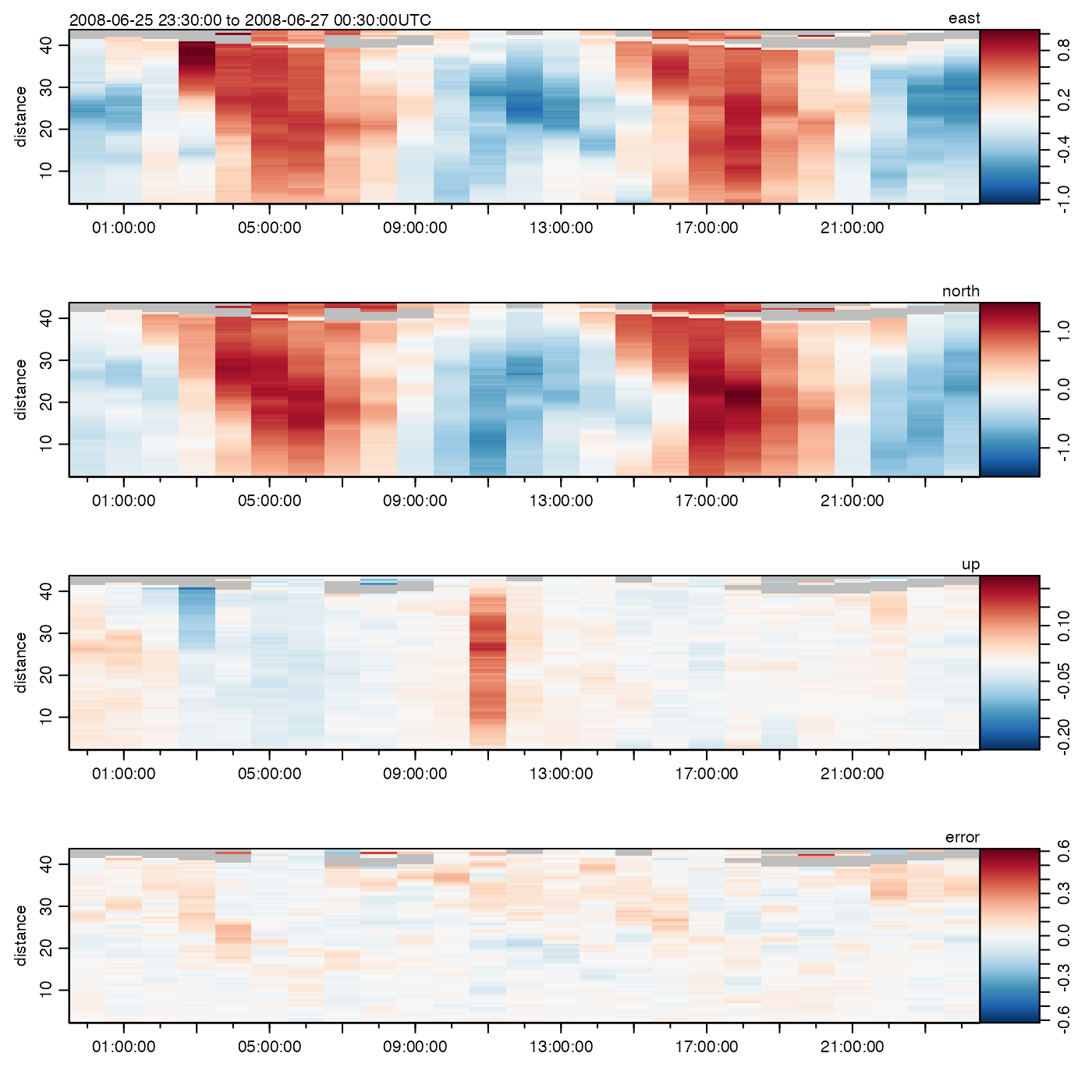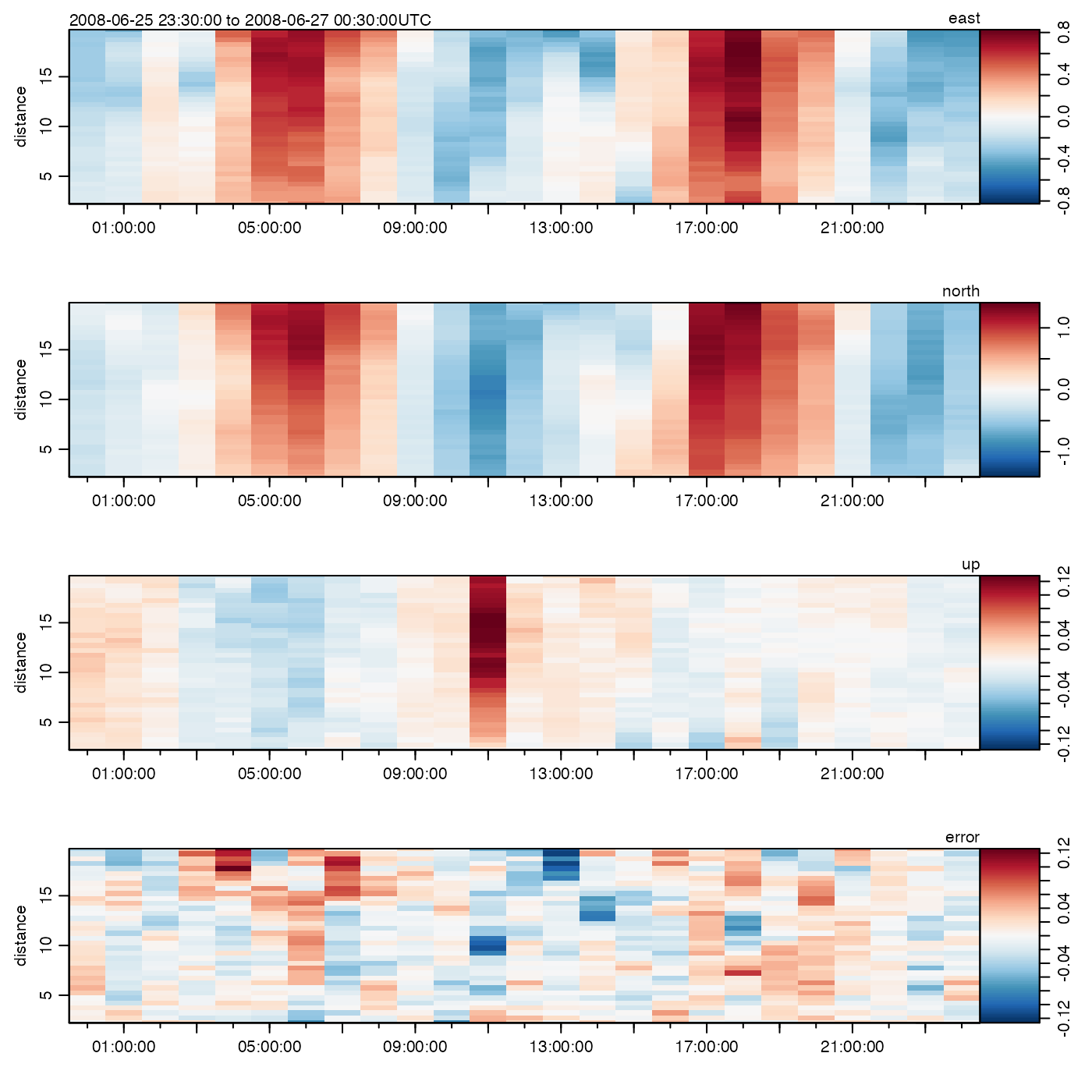Windows x on either time or distance, depending on the value of
which. In each case, values of start and end may be
integers, to indicate a portion of the time or distance range. If
which is "time", then the start and end values
may also be provided as POSIX times, or character strings indicating times
(in time zone given by the value of getOption("oceTz")).
Note that subset() may be more useful than this function.
Arguments
- x
an oce object.
- start
the start time (or distance) of the time (or space) region of interest. This may be a single value or a vector.
- end
the end time (or distance) of the time (or space) region of interest. This may be a single value or a vector.
- frequency
not permitted yet.
- deltat
not permitted yet
- extend
not permitted yet
- which
string containing the name of the quantity on which sampling is done. Possibilities are
"time", which applies the windowing on thetimeentry of thedataslot, and"distance", for thedistanceentry (for those objects, such asadp, that have this entry).- indexReturn
boolean flag indicating whether to return a list of the "kept" indices for the
timeentry of thedataslot, as well as thetimeSlowentry, if there is one.. Either of these lists will beNULL, if the object lacks the relevant items.- debug
a flag that turns on debugging.
- ...
ignored
Value
Normally, this is new oce object. However, if
indexReturn=TRUE, the return value is two-element list containing
items named index and indexSlow, which are the indices for the
time entry of the data slot (and the timeSlow, if it
exists).
See also
subset() provides more flexible selection of subsets.


